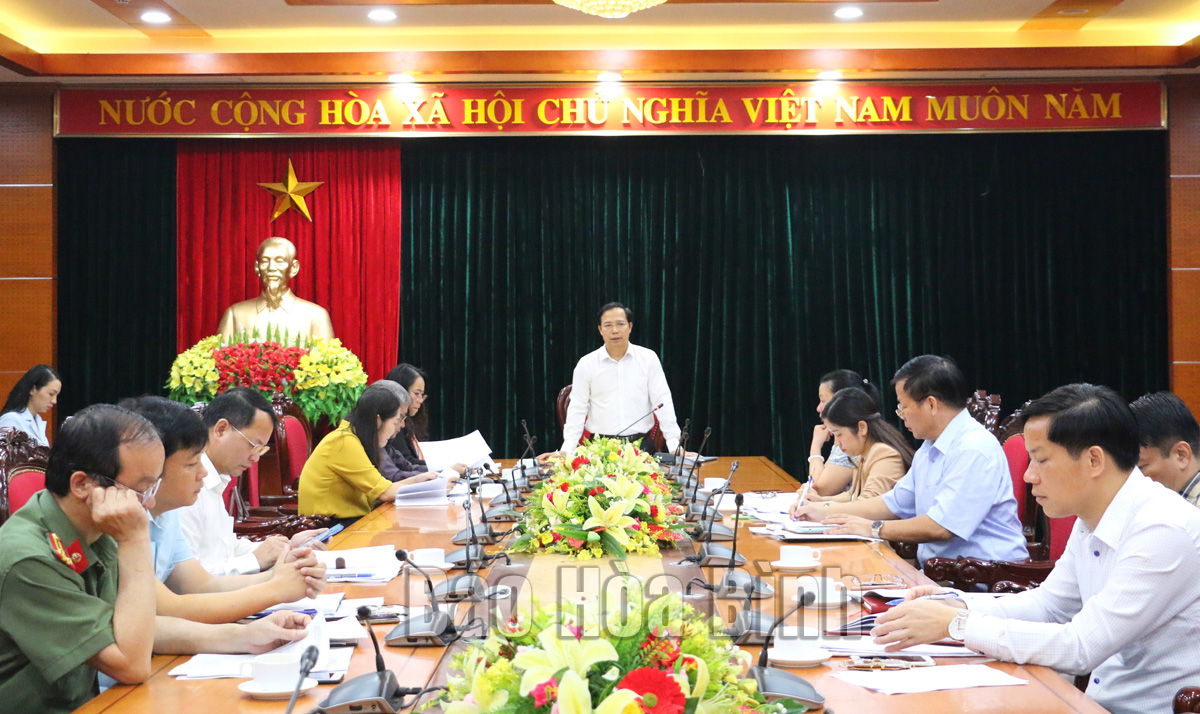



Mr. Nguyen Van Toan, the Standing Vice Chairman of the Provincial People's Committee, Head of the Workshop Organizing Committee delivered a conclusion speech at the meeting.
The conference is held on November 23. From November 21-22, a number of activities take place before the conference. They include summarizing and awarding the writing contest "90 years of world recognition of Hoa Binh Culture”; opening a gallery at the Provincial museum; taking the delegates to visit some typical archaeological relics of Hoa Binh Culture in Lac Son district; cutting the ribbon to open the route named after the French archaeologist, Colani, in Hoa Binh city; announcing the Decision of the President and awarding the title of the People's Artist, the Excellent Artisan of Hoa Binh province.
According to the report of the Organizing Committee, the preparation for the workshop has basically been on schedule up till now. The Organizing Committee synthesizes 19 presentations from the scientists, the archaeologists and the managers; developing a propaganda outline; developing a draft maket to decorate the conference hall, the maket for the ceremony to announce the decision of the State’s President and award the state honorary titles of "People's Artisan” and "Excellent Artisan”, the maket for the invitation template and the yearbook cover. The have been implementing the construction of the thematic exhibition contents of Hoa Binh Culture on Hoa Binh land at the Provincial Museum; developing a detailed plan for the opening program of the route named after the French archaeologist, Mrs. Madeleine Colani and inaugurating the relief of Mrs. Madeleine Colani. The construction of the relief is underway, striving to be installed on November 18-19 and it is expected to be completed on November 20. Currently, they have compiled and marked the entries for Hoa Binh Culture in the writing Contest on Hoa Binh Newspaper...
Making the conclúion speech at the meeting, Mr. Nguyen Van Toan, the Vice Chairman of the Provincial People's Committee, the Head of the Workshop Organizing Committee acknowledged and highly appreciated the preparation work for the 90th World Conference on recognition of Hoa Binh Culture in the past time. In order for theworkshop to take place successfully, the Vice Chairman of the Provincial People's Committee suggests that the members of the Organizing Committee continue closely coordinating to ensure that the workshop goes on as planned. It is necessary to review invitations, presentations, speeches; promoting propaganda work to celebrate the 90th anniversary of the world's recognition of Hoa Binh Culture (1932 - 2022), and the 90th World Conference on the recognition of Hoa Binh Culture. The functional units strengthen the inspection, ensuring food safety and hygiene in the area of the conference participants. The specialized units have plans to ensure security, order, fire and explosion prevention and control and traffic safety during the workshop and activities on the sidelines of the workshop as planned; developing the content and the detailed script for the workshop program...